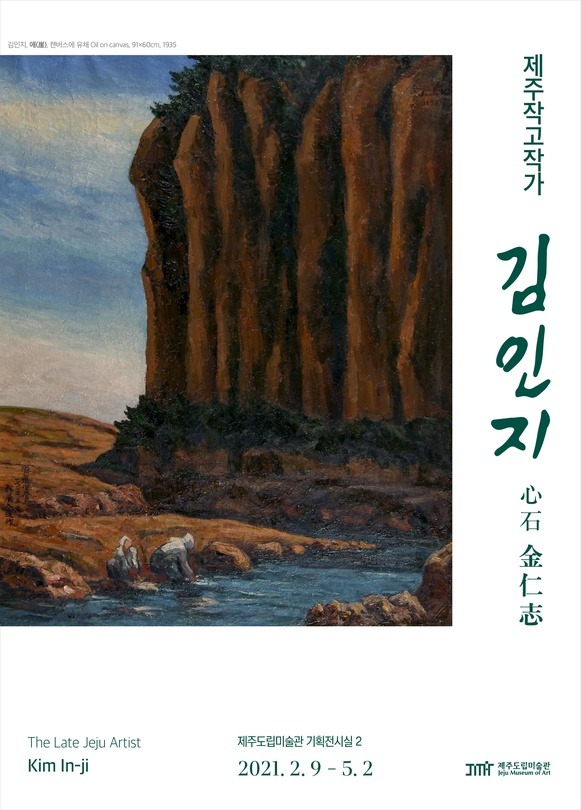
| Period| | 2021.02.09 - 2021.05.02 |
|---|---|
| Operating hours| | 09:00 ~ 18:00 |
| Space| | Jeju Museum of Art/Jeju |
| Address| | 2894-78, 1100-ro, Jeju-si, Jeju-do, Republic of Korea |
| Closed| | Mon., Jan. 1st, Korean Holiday |
| Price| | Adult 2,000won Teenager 1,000won Children 300won |
| Phone| | 064-710-4300 |
| Web site| | 홈페이지 바로가기 |
| Artist| |
김인지
|
정보수정요청



|
|
Exhibition Information
The Jeju Museum of Art organized The Late Jeju Artist as an annual exhibition to systematically organize the history of local art. The first writer is Kim Injee Shim Suk Kim Injee (1907–1967) was born in Yerae-dong, Seogwipo-si, and served as a teacher at Seogwipo Public Normal School (now Seogwipo Elementary School) before moving to Japan to complete the Donggwang Society Painting Class in 1934. In 1935, he submitted "Ae" to the 14th Joseon Art Exhibition (hereinafter referred to as Shenzhen) and was the only one from Jeju Island in the Western painting category, earning the name "Jeju's First Western Painter." In 1936, the 15th and the 17th Shenzhen exhibitions were selected as "Seogwi Port" and "Haenyeo" in 1938. His works mainly feature realistic depictions of the Jeju landscape and the characters living in it. The screen overlapped paints to emphasize the contrast of light and dark colors by emphasizing the characteristics of the material with heavy and bold strokes. This method of production highlights his meticulously calculated sensual screen composition. In 1939, he was appointed as an art lecturer at the Jeju Public Agricultural School (currently Jeju High School) and trained his juniors to introduce and develop a Western painting in Jeju Island. In addition, the Jeju Art Association (currently the Jeju branch of the Korean Art Association) was established and the first president of the Jeju Art Association was organized systematically. As such, he not only laid the foundation for the Jeju flower garden, but also served as a pioneer in promoting Jeju art outside the province, so it is safe to say that Kim Injee's personal history is the early history of Jeju modernization. In addition, he devoted himself to the development of the local community as well as the Jeju culture and arts community through various activities as an educator, broadcaster, and the mayor of Jeju City. The Jeju Museum of Art will look back on the lives of small and medium-sized artists who continued to work in Jeju Island starting with Kim Injee's first, and find, organize, and shed light on the history. Through this, we will try to establish the identity that public art museums should aim for.
